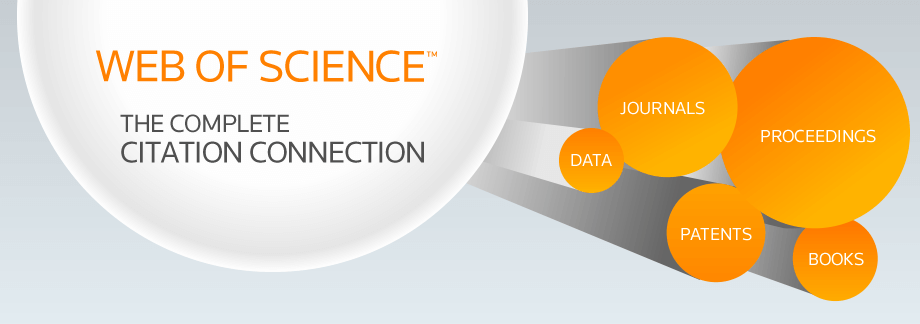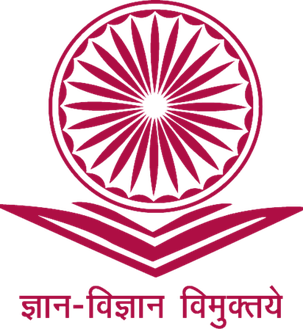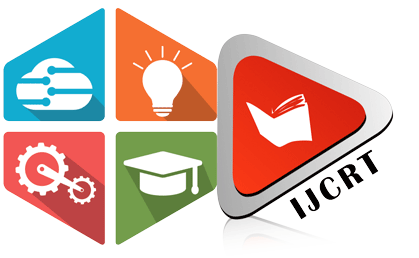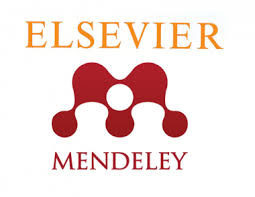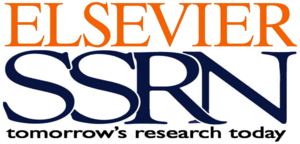INTERNATIONAL JOURNAL OF CREATIVE RESEARCH THOUGHTS - IJCRT (IJCRT.ORG)
International Peer Reviewed & Refereed Journals, Open Access Journal
IJCRT Peer-Reviewed (Refereed) Journal as Per New UGC Rules.
ISSN Approved Journal No: 2320-2882 | Impact factor: 7.97 | ESTD Year: 2013
Call For Paper - Volume 13 | Issue 11 | Month- November 2025
Scholarly open access journals, Peer-reviewed, and Refereed Journals, Impact factor 7.97 (Calculate by google scholar and Semantic Scholar | AI-Powered Research Tool) , Multidisciplinary, Monthly, Indexing in all major database & Metadata, Citation Generator, Digital Object Identifier(CrossRef DOI)
Contact Us Click Here
WhatsApp Contact Click Here
Volume 13 | Issue 7 |
| IJCRT Journal front page | IJCRT Journal Back Page |
Paper Title: TAILAPAYIKAA KAVYE SAMUPAVARNITAAHA ALANKARAAHA-EKAMADHYAYANAM
Author Name(s): K. DHANA LAKSHMI
Published Paper ID: - IJCRT2507460
Register Paper ID - 291232
Publisher Journal Name: IJPUBLICATION, IJCRT
DOI Member ID: 10.6084/m9.doi.one.IJCRT2507460 and DOI :
Author Country : Indian Author, India, - , -, - , | Research Area: Science and Technology Published Paper URL: http://ijcrt.org/viewfull.php?&p_id=IJCRT2507460 Published Paper PDF: download.php?file=IJCRT2507460 Published Paper PDF: http://www.ijcrt.org/papers/IJCRT2507460.pdf
Your Paper Publication Details:
Title: TAILAPAYIKAA KAVYE SAMUPAVARNITAAHA ALANKARAAHA-EKAMADHYAYANAM
DOI (Digital Object Identifier) :
Pubished in Volume: 13 | Issue: 7 | Year: July 2025
Publisher Name : IJCRT | www.ijcrt.org | ISSN : 2320-2882
Subject Area: Science and Technology
Author type: Indian Author
Pubished in Volume: 13
Issue: 7
Pages: e1-e7
Year: July 2025
Downloads: 101
E-ISSN Number: 2320-2882
Abstract
TAILAPAYIKAA KAVYE SAMUPAVARNITAAHA ALANKARAAHA-EKAMADHYAYANAM
Licence: creative commons attribution 4.0
License
Keywords
TAILAPAYIKAA KAVYE SAMUPAVARNITAAHA ALANKARAAHA-EKAMADHYAYANAM
License
Paper Title: Mediated Gender Normativity: The Construction and Perpetuation of Gender Stereotypes through Media Representation.
Author Name(s): Khriezonuo Kire, Vidilhounuo Savino
Published Paper ID: - IJCRT2507459
Register Paper ID - 291258
Publisher Journal Name: IJPUBLICATION, IJCRT
DOI Member ID: 10.6084/m9.doi.one.IJCRT2507459 and DOI :
Author Country : Indian Author, India, 797115 , Chumukedima, 797115 , | Research Area: Arts1 All Published Paper URL: http://ijcrt.org/viewfull.php?&p_id=IJCRT2507459 Published Paper PDF: download.php?file=IJCRT2507459 Published Paper PDF: http://www.ijcrt.org/papers/IJCRT2507459.pdf
Your Paper Publication Details:
Title: MEDIATED GENDER NORMATIVITY: THE CONSTRUCTION AND PERPETUATION OF GENDER STEREOTYPES THROUGH MEDIA REPRESENTATION.
DOI (Digital Object Identifier) :
Pubished in Volume: 13 | Issue: 7 | Year: July 2025
Publisher Name : IJCRT | www.ijcrt.org | ISSN : 2320-2882
Subject Area: Arts1 All
Author type: Indian Author
Pubished in Volume: 13
Issue: 7
Pages: d992-d996
Year: July 2025
Downloads: 111
E-ISSN Number: 2320-2882
Abstract
Abstract: We learn our gender as surely as we learn to speak, and what we learn is that women must be passive and men must be active. This is the great theme of cultural narratives." These words by Jean Kilbourne capture the powerful role that media and popular culture play in shaping society understands of gender. In today's world, the Media has become one of the most efficient fuels in running the engine that drives societal attitudes and perceptions. Undeniably it is shaping and molding the way people view themselves and others. For decades, social media has had the power to influence one's identity. Despite the proliferation of diverse media platforms- ranging from television, radio, music, cinema, and social media, gender representation is often confined within restrictive stereotypes. A concept one might agree with, while the other finds it contentious. This article examines the extent to which the media continues to reflects and reinforce binary gender stereotypes, thereby limiting the way society views and expects individuals to express masculinity and femininity. Furthermore, it also highlights the contemporary shifts to break down these stereotypes, the growing consciousness of people and society, ultimately giving us a glimpse of the road ahead towards greater gender representation and equality. The findings indicate that while mainstream media continues to propagate narrow and often stereotypical portrayals of gender, there is a discernible trend towards greater inclusivity and complexity in gender representation. Increased social awareness, advocacy, representation have prompted both creators and consumers to challenge traditional narratives, fostering a more nuanced understanding of gender identities. However, significant efforts for equitable representation persist, necessity the ongoing critical engagement and policy intervention.
Licence: creative commons attribution 4.0
License
Keywords
Gender stereotypes, Media representation, stereotyping, sexualization, media influence, gender identity, socialization.
License
Paper Title: COMBATING E.COLI RESISTANCE WITH ESSENTIAL OILS: A STUDY ON THE EFFICACY OF AJWAIN AND CLOVE OIL
Author Name(s): Ms.Tanaya Bhowate, Mr.Vikas Kunde
Published Paper ID: - IJCRT2507458
Register Paper ID - 291316
Publisher Journal Name: IJPUBLICATION, IJCRT
DOI Member ID: 10.6084/m9.doi.one.IJCRT2507458 and DOI :
Author Country : Indian Author, India, 422102 , Nashik, 422102 , | Research Area: Pharmacy All Published Paper URL: http://ijcrt.org/viewfull.php?&p_id=IJCRT2507458 Published Paper PDF: download.php?file=IJCRT2507458 Published Paper PDF: http://www.ijcrt.org/papers/IJCRT2507458.pdf
Your Paper Publication Details:
Title: COMBATING E.COLI RESISTANCE WITH ESSENTIAL OILS: A STUDY ON THE EFFICACY OF AJWAIN AND CLOVE OIL
DOI (Digital Object Identifier) :
Pubished in Volume: 13 | Issue: 7 | Year: July 2025
Publisher Name : IJCRT | www.ijcrt.org | ISSN : 2320-2882
Subject Area: Pharmacy All
Author type: Indian Author
Pubished in Volume: 13
Issue: 7
Pages: d984-d991
Year: July 2025
Downloads: 105
E-ISSN Number: 2320-2882
Abstract
With the rise in antibiotic resistance, essential oils--known for their antibacterial qualities--are becoming more and more popular as natural substitutes for traditional antibiotics. The purpose of this study was to evaluate the antibacterial activity of two essential oils--clove (Syzygium aromaticum) and ajwain (Carum copticum)--against a resistant strain of Escherichia coli. The zone of inhibition and colony counting were the two techniques used in the study. Each essential oil was evaluated at varying concentrations (25?l, 50?l, 75?l, and 100?l) while the bacteria were cultured on nutrient agar and nutrient broth. The typical reference antibiotic that was used was amoxicillin. Clove oil showed a bigger inhibition zone than amoxicillin and ajwain oil, with diameters up to 26 mm, according to the zone of inhibition technique results. Further confirming clove oil's greater antibacterial activity, the colony counting method showed a higher inhibition percentage for clove oil (88.3%) than for ajwain oil (75%). The main reason clove oil works so well is because of eugenol, a phenolic component that breaks down bacterial cell walls and prevents vital biological processes. Thymol containing ajwain oil also demonstrated strong antimicrobial properties. The potential application of essential oils, especially clove oil, as strong antibacterial agents against resistant E. coli is highlighted by this study. These results imply that essential oils may be crucial in creating alternative treatment approaches, which is noteworthy given the rise in antibiotic resistance.
Licence: creative commons attribution 4.0
License
Keywords
Ajwain oil, Clove Oil, Amoxicillin, Antibacteria
License
Paper Title: Sustainable antibacterial finish on cotton knitted fabric by using Eucalyptus
Author Name(s): K.Sridhar, Dr.N.Gokarneshan, A.Jothimanikandan, P.Periyasamy, M.Ponmaniselvam and N.Saravanan
Published Paper ID: - IJCRT2507457
Register Paper ID - 291314
Publisher Journal Name: IJPUBLICATION, IJCRT
DOI Member ID: 10.6084/m9.doi.one.IJCRT2507457 and DOI :
Author Country : Indian Author, India, - , -, - , | Research Area: Science and Technology Published Paper URL: http://ijcrt.org/viewfull.php?&p_id=IJCRT2507457 Published Paper PDF: download.php?file=IJCRT2507457 Published Paper PDF: http://www.ijcrt.org/papers/IJCRT2507457.pdf
Your Paper Publication Details:
Title: SUSTAINABLE ANTIBACTERIAL FINISH ON COTTON KNITTED FABRIC BY USING EUCALYPTUS
DOI (Digital Object Identifier) :
Pubished in Volume: 13 | Issue: 7 | Year: July 2025
Publisher Name : IJCRT | www.ijcrt.org | ISSN : 2320-2882
Subject Area: Science and Technology
Author type: Indian Author
Pubished in Volume: 13
Issue: 7
Pages: d973-d983
Year: July 2025
Downloads: 136
E-ISSN Number: 2320-2882
Abstract
The textile industry has seen a growing demand for sustainable and functional fabrics, particularly those with antibacterial properties. Traditional antibacterial finishes often rely on synthetic chemicals, which pose environmental and health risks. This project explores the use of eucalyptus oil, a natural and renewable resource, to impart an eco-friendly, antibacterial finish on cotton knitted fabric. Eucalyptus oil is known for its antimicrobial properties, and its application in textile finishing offers a sustainable alternative to conventional chemical treatments. The project will focus on optimizing the process of applying eucalyptus oil to cotton knitted fabrics, ensuring durability and long-lasting antibacterial effects even after multiple washes. Such as tensile strength, softness, and color fastness, will be thoroughly assessed. This eco-friendly treatment not only aligns with the growing trend toward sustainability in the textile industry but also provides consumers with healthier, non-toxic textile options.
Licence: creative commons attribution 4.0
License
Keywords
Antibacterial finish, Cotton, Durability, Eucalyptus, Knit fabric,Properties
License
Paper Title: "Shockwaves against Spasticity": Evaluating the Efficacy of Extracorporeal Shockwave Therapy in Neurological conditions-A Systematic Review in Neuro Physiotherapy
Author Name(s): Dr. Salim Shaikh, Dr. Mohammad Zishan, Dr. Smita Mundhe
Published Paper ID: - IJCRT2507456
Register Paper ID - 291306
Publisher Journal Name: IJPUBLICATION, IJCRT
DOI Member ID: 10.6084/m9.doi.one.IJCRT2507456 and DOI :
Author Country : Indian Author, India, 413531 , Latur, 413531 , | Research Area: Humanities All Published Paper URL: http://ijcrt.org/viewfull.php?&p_id=IJCRT2507456 Published Paper PDF: download.php?file=IJCRT2507456 Published Paper PDF: http://www.ijcrt.org/papers/IJCRT2507456.pdf
Your Paper Publication Details:
Title: "SHOCKWAVES AGAINST SPASTICITY": EVALUATING THE EFFICACY OF EXTRACORPOREAL SHOCKWAVE THERAPY IN NEUROLOGICAL CONDITIONS-A SYSTEMATIC REVIEW IN NEURO PHYSIOTHERAPY
DOI (Digital Object Identifier) :
Pubished in Volume: 13 | Issue: 7 | Year: July 2025
Publisher Name : IJCRT | www.ijcrt.org | ISSN : 2320-2882
Subject Area: Humanities All
Author type: Indian Author
Pubished in Volume: 13
Issue: 7
Pages: d963-d972
Year: July 2025
Downloads: 112
E-ISSN Number: 2320-2882
Abstract
Abstract: Background: Spasticity is a significant and challenging consequence of neurological conditions, often resulting in impaired mobility, discomfort, and a decline in quality of life. Conventional therapies, including pharmacological and surgical interventions, have limitations due to side effects and invasiveness. Extracorporeal shockwave therapy (ESWT) has gained attention as a novel, non-invasive therapeutic modality. Objective: This systematic review aims to evaluate and synthesize current evidence regarding the effectiveness of ESWT in reducing spasticity across various neurological disorders. Methods: A systematic literature search was conducted across four databases: PubMed, Scopus, Google Scholar, and Ovid, covering the period from January 2010 to December 2024. Search terms included "extracorporeal shockwave therapy," "ESWT," "spasticity," "stroke," "cerebral palsy," and "neurological rehabilitation." Inclusion criteria were studies involving human participants with neurologically induced spasticity treated with ESWT. Only studies employing objective measures such as the Modified Ashworth Scale (MAS), Fugl-Meyer Assessment (FMA), or electromyography (EMG) were included. A total of 11 studies were included in the qualitative synthesis. Results: The majority of the included studies were conducted in stroke populations, targeting both upper and lower limb spasticity. Both radial and focused ESWT were utilized, with variations in dosage, application frequency, and treatment site. All studies reported improvements in spasticity post-treatment, with MAS scores significantly reduced in most. Improvements were observed immediately and persisted up to four weeks post-intervention. Functional improvements in mobility and limb use were noted in studies measuring secondary outcomes. The musculotendinous junction appeared to be a more effective target site compared to muscle belly. Conclusion: ESWT is a promising adjunctive treatment for reducing spasticity in neurological conditions. It demonstrates efficacy in lowering muscle tone and improving functional outcomes with minimal side effects. Further large-scale, high-quality studies are warranted to optimize treatment parameters and assess long-term efficacy.
Licence: creative commons attribution 4.0
License
Keywords
Keywords: "Extracorporeal Shockwave Therapy / ESWT, Spasticity / Muscle Tone, Stroke / Cerebral Palsy / Neurological Disorder, Radial Shockwave / Focused Shockwave.
License
Paper Title: Atma Nirbhar Bharat: Bridging India's skill gap through Skill Training Development Centres (STDCs)
Author Name(s): Shuaib Ul Islam, Dr. Anwara Hashmi
Published Paper ID: - IJCRT2507455
Register Paper ID - 291195
Publisher Journal Name: IJPUBLICATION, IJCRT
DOI Member ID: 10.6084/m9.doi.one.IJCRT2507455 and DOI :
Author Country : Indian Author, India, - , -, - , | Research Area: Science and Technology Published Paper URL: http://ijcrt.org/viewfull.php?&p_id=IJCRT2507455 Published Paper PDF: download.php?file=IJCRT2507455 Published Paper PDF: http://www.ijcrt.org/papers/IJCRT2507455.pdf
Your Paper Publication Details:
Title: ATMA NIRBHAR BHARAT: BRIDGING INDIA'S SKILL GAP THROUGH SKILL TRAINING DEVELOPMENT CENTRES (STDCS)
DOI (Digital Object Identifier) :
Pubished in Volume: 13 | Issue: 7 | Year: July 2025
Publisher Name : IJCRT | www.ijcrt.org | ISSN : 2320-2882
Subject Area: Science and Technology
Author type: Indian Author
Pubished in Volume: 13
Issue: 7
Pages: d959-d962
Year: July 2025
Downloads: 116
E-ISSN Number: 2320-2882
Abstract
India has a large pool of unskilled workers and a significant skill gap in employment. By providing training and skill development opportunities for unskilled workers, skill training centres can help bridge this gap and make these unskilled workers active contributor of society that can drive economic growth and promote self-reliance in the country. Skill development is an integral part of the Atma Nirbhar Bharat initiative launched by the Indian government in 2020. The Skill Training Development Centres (STDC) have been contributing in India's journey towards self-reliance by providing focused & dedicated vocational training and skill development programs to individuals from various backgrounds, including school dropouts, unemployed youth, and even existing workers looking to upgrade their skills. This chapter tries to explore the role of these STDCs in bridging the India's skill gap under Atma Nirbhar Bharat initiative.
Licence: creative commons attribution 4.0
License
Keywords
Skill, Skill Training Development Centres and Atma Nirbhar Bharat
License
Paper Title: Role of KADCO In Empowering Traditional Artisans In Kerala
Author Name(s): Aathira G Nair, Dr. Nimi Dev R
Published Paper ID: - IJCRT2507454
Register Paper ID - 291242
Publisher Journal Name: IJPUBLICATION, IJCRT
DOI Member ID: 10.6084/m9.doi.one.IJCRT2507454 and DOI :
Author Country : Indian Author, India, 695009 , Thiruvananthapuram , 695009 , | Research Area: Commerce All Published Paper URL: http://ijcrt.org/viewfull.php?&p_id=IJCRT2507454 Published Paper PDF: download.php?file=IJCRT2507454 Published Paper PDF: http://www.ijcrt.org/papers/IJCRT2507454.pdf
Your Paper Publication Details:
Title: ROLE OF KADCO IN EMPOWERING TRADITIONAL ARTISANS IN KERALA
DOI (Digital Object Identifier) :
Pubished in Volume: 13 | Issue: 7 | Year: July 2025
Publisher Name : IJCRT | www.ijcrt.org | ISSN : 2320-2882
Subject Area: Commerce All
Author type: Indian Author
Pubished in Volume: 13
Issue: 7
Pages: d948-d958
Year: July 2025
Downloads: 123
E-ISSN Number: 2320-2882
Abstract
The Kerala State Artisans Development Corporation (KADCO) plays a pivotal role in empowering traditional artisans and preserving Kerala's rich cultural heritage. This article explores the historical evolution and organizational framework of KADCO, shedding light on its foundational mission to support the state's artisanal communities. It delves into the strategies adopted by KADCO to preserve and promote traditional crafts, including marketing initiatives, skill development programs, and efforts to foster sustainable production practices. Furthermore, the article evaluates the socio-economic impact of KADCO's initiatives on artisans, examining how these efforts have contributed to enhancing their livelihoods and ensuring the continuity of age-old craftsmanship. By providing a theoretical perspective on KADCO's role, the study aims to highlight its significance in revitalizing Kerala's artisan sector and the challenges it faces in sustaining traditional crafts in the modern era. The findings underscore KADCO's contribution to artisan empowerment and the need for continued institutional and policy support to secure the future of traditional crafts.
Licence: creative commons attribution 4.0
License
Keywords
Kerala State Artisans Development Corporation (KADCO),Traditional artisans,Artisan empowerment,Socio-economic development.
License
Paper Title: A Study on Emotional Intelligence and Academic Performance among Adolescents
Author Name(s): DR. JYOTI
Published Paper ID: - IJCRT2507453
Register Paper ID - 290934
Publisher Journal Name: IJPUBLICATION, IJCRT
DOI Member ID: 10.6084/m9.doi.one.IJCRT2507453 and DOI :
Author Country : Indian Author, India, 2021204 , GHAZIABAD, 2021204 , | Research Area: Arts All Published Paper URL: http://ijcrt.org/viewfull.php?&p_id=IJCRT2507453 Published Paper PDF: download.php?file=IJCRT2507453 Published Paper PDF: http://www.ijcrt.org/papers/IJCRT2507453.pdf
Your Paper Publication Details:
Title: A STUDY ON EMOTIONAL INTELLIGENCE AND ACADEMIC PERFORMANCE AMONG ADOLESCENTS
DOI (Digital Object Identifier) :
Pubished in Volume: 13 | Issue: 7 | Year: July 2025
Publisher Name : IJCRT | www.ijcrt.org | ISSN : 2320-2882
Subject Area: Arts All
Author type: Indian Author
Pubished in Volume: 13
Issue: 7
Pages: d942-d947
Year: July 2025
Downloads: 113
E-ISSN Number: 2320-2882
Abstract
Abstract: This study examines the relationship between emotional intelligence (EI) and academic performance among adolescents. Emotional intelligence, defined as the ability to perceive, understand, regulate, and express emotions, is increasingly recognized as a critical factor in student success. Using a quantitative correlational research design, data were collected from 100 secondary school students through a standardized EI scale and academic records. The findings revealed a moderate positive correlation between emotional intelligence and academic achievement. The study suggests that higher emotional awareness and self-regulation contribute significantly to improved academic outcomes. The results underscore the importance of integrating emotional skills training into the school curriculum to support holistic student development.
Licence: creative commons attribution 4.0
License
Keywords
Emotional intelligence (EI),Academic Performance ,Adolescents
License
Paper Title: Head Hunting: An Abandoned Practice Among the Nocte Tribe of Arunachal Pradesh
Author Name(s): Dr.Tocha Hosai
Published Paper ID: - IJCRT2507452
Register Paper ID - 291319
Publisher Journal Name: IJPUBLICATION, IJCRT
DOI Member ID: 10.6084/m9.doi.one.IJCRT2507452 and DOI :
Author Country : Indian Author, India, 791110 , Naharlagun , 791110 , | Research Area: Arts1 All Published Paper URL: http://ijcrt.org/viewfull.php?&p_id=IJCRT2507452 Published Paper PDF: download.php?file=IJCRT2507452 Published Paper PDF: http://www.ijcrt.org/papers/IJCRT2507452.pdf
Your Paper Publication Details:
Title: HEAD HUNTING: AN ABANDONED PRACTICE AMONG THE NOCTE TRIBE OF ARUNACHAL PRADESH
DOI (Digital Object Identifier) :
Pubished in Volume: 13 | Issue: 7 | Year: July 2025
Publisher Name : IJCRT | www.ijcrt.org | ISSN : 2320-2882
Subject Area: Arts1 All
Author type: Indian Author
Pubished in Volume: 13
Issue: 7
Pages: d939-d941
Year: July 2025
Downloads: 98
E-ISSN Number: 2320-2882
Abstract
Head Hunting was a traditional mode of warfare practiced by the Nocte Tribe of Arunachal Pradesh. Many factors like to establish superiority, control over land and water often led to conflict. This practice was given up after the establishment of administration in the region.
Licence: creative commons attribution 4.0
License
Keywords
Head Hunting, Ran, Surprise raid, Ambush, Omen
License
Paper Title: Reducing Stigma Through Knowledge: A Study of Primary Caregivers of Individuals with Mental Illness
Author Name(s): Anupriya Naruka, Dr. Chirmi Acharya, Dr. Mukesh Daderwal, Chhaya Rousa
Published Paper ID: - IJCRT2507451
Register Paper ID - 291310
Publisher Journal Name: IJPUBLICATION, IJCRT
DOI Member ID: 10.6084/m9.doi.one.IJCRT2507451 and DOI :
Author Country : Indian Author, India, - , -, - , | Research Area: Science and Technology Published Paper URL: http://ijcrt.org/viewfull.php?&p_id=IJCRT2507451 Published Paper PDF: download.php?file=IJCRT2507451 Published Paper PDF: http://www.ijcrt.org/papers/IJCRT2507451.pdf
Your Paper Publication Details:
Title: REDUCING STIGMA THROUGH KNOWLEDGE: A STUDY OF PRIMARY CAREGIVERS OF INDIVIDUALS WITH MENTAL ILLNESS
DOI (Digital Object Identifier) :
Pubished in Volume: 13 | Issue: 7 | Year: July 2025
Publisher Name : IJCRT | www.ijcrt.org | ISSN : 2320-2882
Subject Area: Science and Technology
Author type: Indian Author
Pubished in Volume: 13
Issue: 7
Pages: d930-d938
Year: July 2025
Downloads: 100
E-ISSN Number: 2320-2882
Abstract
Background- Mental health knowledge plays a vital role in de-stigmatizing people about mental illness. The understanding of the primary caregivers and their stigma about mental illness matters a lot as their knowledge and stigma will affect the patient's mental health and recovery. Aim- Study of the mental health knowledge and mental health stigma among the primary caregivers of mentally ill patients. Methodology- Primary caregivers were taken with the help of interviewing methods from the psychiatric center of SMS, Jaipur, using mental health knowledge questionnaire and perceived devaluation and discrimination scale. Frequencies & correlation as statics was used to find out the role among the two. Results- Stigma and mental health knowledge are negatively correlated findings have suggested that with the increase in the knowledge of mental health there is a decreased stigma. So, to increase the knowledge and decrease the stigma among people about mental health and its illnesses various awareness programs can be organized.
Licence: creative commons attribution 4.0
License
Keywords
Mental health knowledge, Mental health stigma, Primary caregivers, Mental illness & Patients
License
November 2025
Volume 13 | Issue 11
Last Date :
30-Nov-2025
Submit Manuscript Online Impact Factor: 7.97 Review Results : Within 02-03 Days Paper Publication : Within 02-03 Days

ISSN: 2320-2882 Impact Factor: 7.97 and ISSN APPROVED Journal Starting Year (ESTD) : 2013

ISSN: 2320-2882 Impact Factor: 7.97 and ISSN APPROVED Journal Starting Year (ESTD) : 2013

CONFERENCE PROPOSAL CONFERENCE PROCEEDINGS





